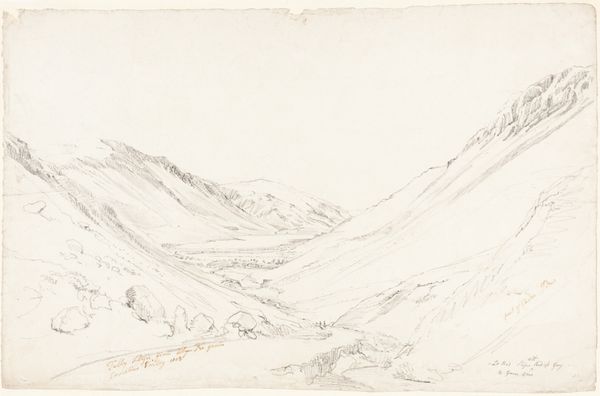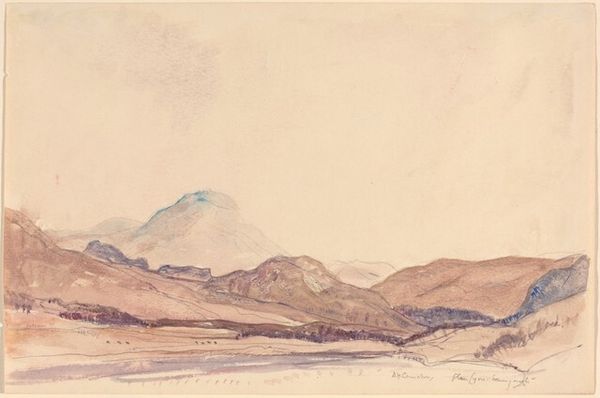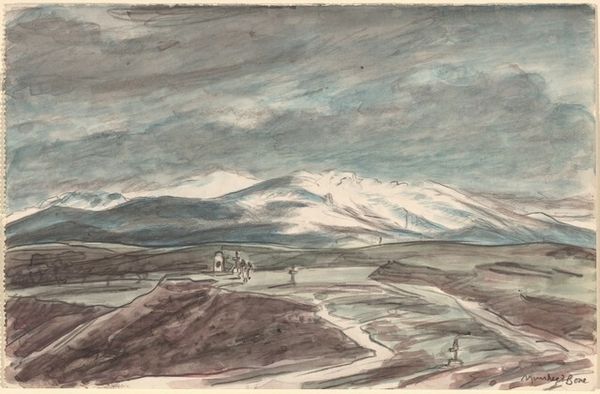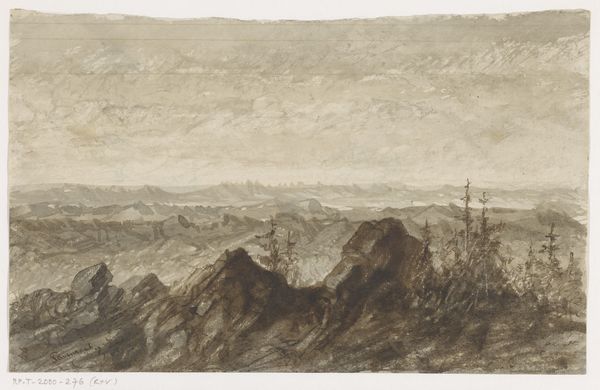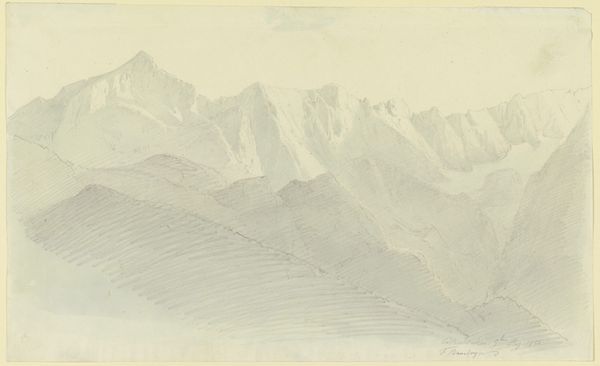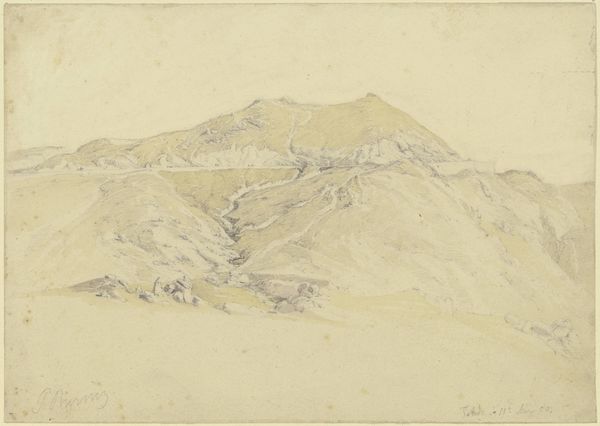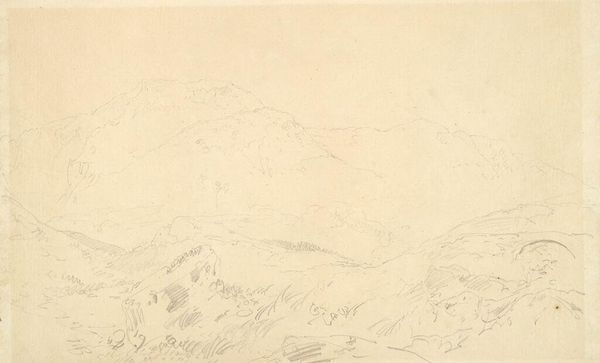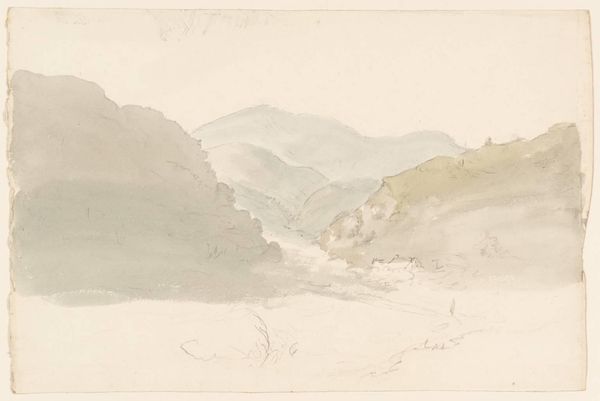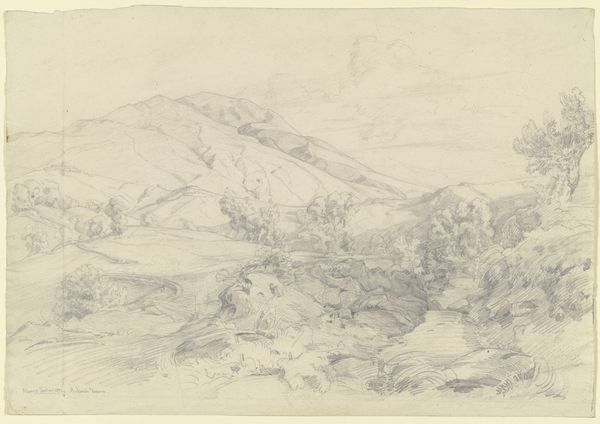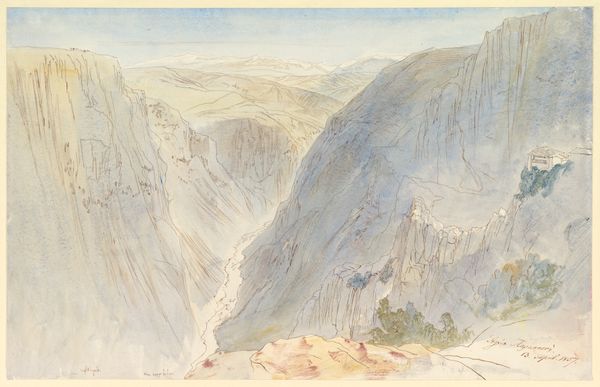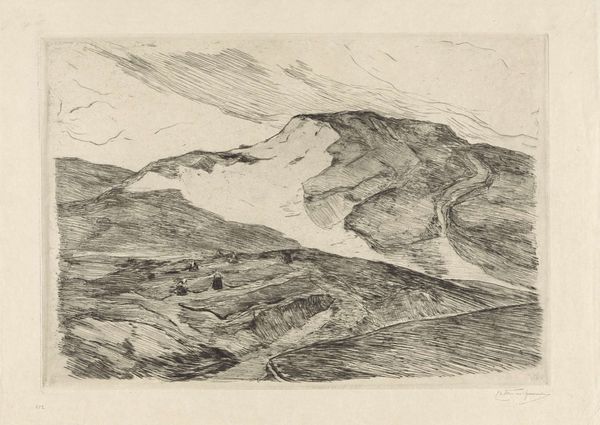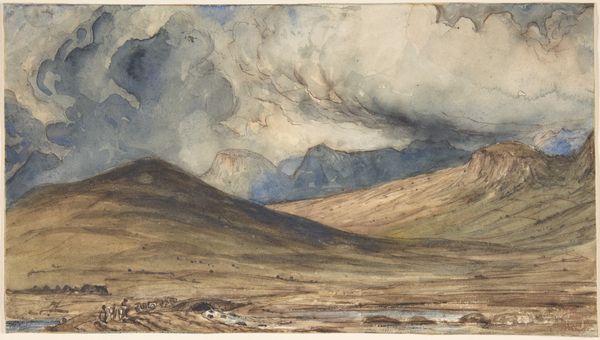
drawing, watercolor, pencil
#
drawing
#
pencil sketch
#
landscape
#
charcoal drawing
#
watercolor
#
pencil drawing
#
romanticism
#
pencil
#
watercolor
Dimensions: overall: 21.4 x 27.8 cm (8 7/16 x 10 15/16 in.)
Copyright: National Gallery of Art: CC0 1.0
Curator: Muirhead Bone's drawing "Appenines," executed with pencil and watercolor, offers a muted, atmospheric vista. What strikes you first about it? Editor: The vast emptiness of the sky, dominating the composition, evokes a certain melancholic grandeur. The subdued palette amplifies this mood. Curator: Indeed. The limited color range serves to emphasize the textured lines creating form. It begs us to question the history ingrained within landscapes and its representation in Romantic art and beyond. How has that lens affected or warped perceptions? Editor: Structurally, I find it compelling how the converging lines draw the eye deep into the receding planes of mountains, creating a believable sense of depth, even with such restrained tonal variation. There's a quiet, understated sophistication to it. Curator: Right. Given Muirhead Bone’s participation in WWI, could the seemingly innocuous subject matter reveal or reflect the violence of modernism's machinery upon naturalized, idealized places, given how art creates specific political, economic and social positions? Editor: An interesting proposition. Perhaps, too, the deliberate sketch-like quality, its seeming incompleteness, mirrors the fragmentation and uncertainty felt post-war, translated onto the natural world. The medium itself speaks. Curator: The sociopolitical implication becomes less implicit by taking his war-torn experiences as a context. We are pushed to consider our own position and how dominant views have framed our perceptions of historical moments such as this one, particularly within a time marked by turmoil. Editor: Yes, I see your point. Perhaps the seeming absence of humanity within the landscape—its perceived emptiness—actually points to their absence, loss, or a deep seated psychological alienation caused by trauma. It's a sobering perspective. Curator: Hopefully, that sobering perspective also leaves you open to question other dominant perspectives you engage with and reflect critically on their impacts. Editor: Precisely. Considering it from this perspective has really shifted how I see the work – it’s moved beyond the purely aesthetic to engage with profound historical and social currents.
Comments
No comments
Be the first to comment and join the conversation on the ultimate creative platform.
